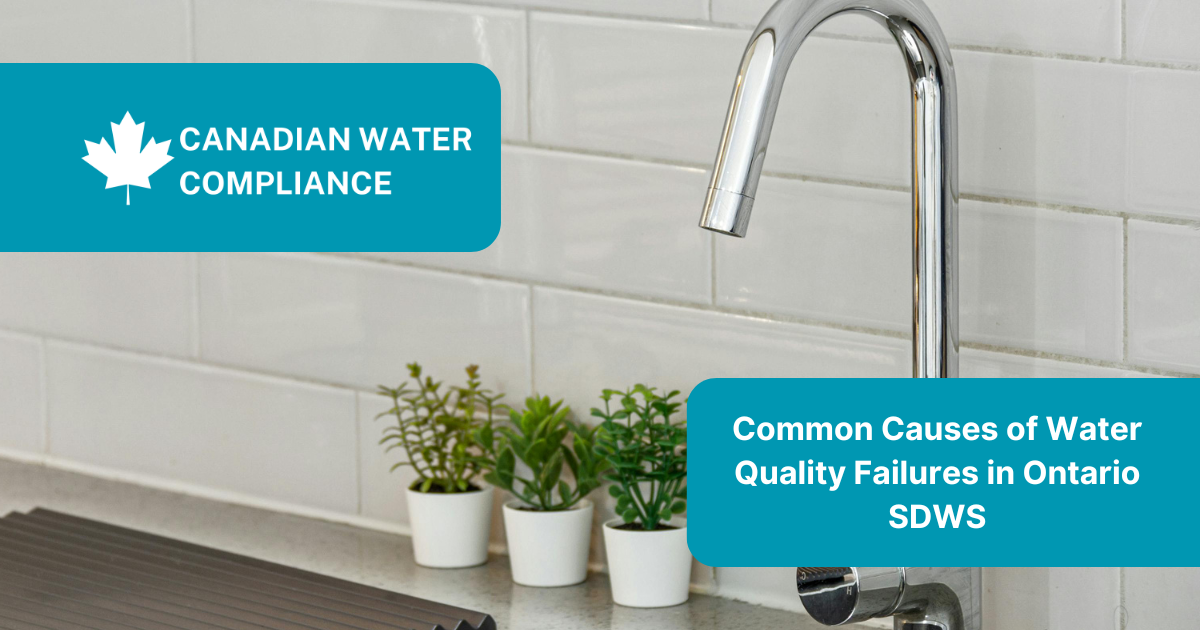
Written By: Canadian Water Compliance | On
Small Drinking Water Systems (SDWS) are critical for public health across Ontario—especially in rural areas, seasonal businesses, parks, and private facilities not connected to municipal supplies. But maintaining safe water in these systems isn’t always straightforward. Every year, dozens of SDWSs receive boil water advisories or inspection notices due to preventable issues with their water systems.
Understanding the most common causes of water quality failures is the first step to preventing them. Here’s what Ontario SDWS operators need to watch out for—and how to stay compliant with O. Reg. 319/08 under the Safe Drinking Water Act.
E. coli and Total Coliforms are required to be tested at least every two weeks during the operating season for most SDWS setups. Many failures occur because:
Operators skip tests due to staffing or oversight
Testing isn’t aligned with the operating schedule
Samples aren’t collected or transported correctly to an accredited lab
Solution: Set automated reminders and maintain a water testing schedule, especially for seasonal sites. Work with a certified water testing provider to ensure all documentation is valid.
A large number of SDWS-related water advisories stem from poor system maintenance before or during the season:
Systems aren’t flushed thoroughly after winterization
Disinfection is skipped or not performed correctly
Treatment equipment (e.g., UV lights, chlorinators) is out of service or malfunctioning
Solution: Ensure your seasonal start-up includes full flushing, disinfection, and testing. Keep logs for inspections. Confirm all treatment systems are functioning and maintained.
Old pumps, deteriorating pipes, and aging pressure tanks can compromise water quality or contribute to low-pressure incidents that increase contamination risk.
Solution: Inspect and upgrade aging equipment. Include preventive maintenance in your annual planning and document all repairs or replacements for review.
Private wells and surface sources are vulnerable to runoff from:
Agriculture (manure, fertilizer, pesticides)
Septic fields
Fuel storage or vehicle maintenance areas
Solution: Regularly inspect wellheads for integrity and distance from contamination risks. Consider adding nitrate or pesticide screening to your annual testing if your SDWS is near high-risk land use.
Even when testing is done, many SDWS fail inspections due to:
Incomplete testing logs
No posted advisories after failed results
Missing maintenance or operator training records
Solution: Keep organized, up-to-date records for at least 5 years. Use logbooks, digital forms, and label posting areas for compliance.
We support SDWS operators across Ontario with:
Routine microbiological and chemical water testing
Seasonal start-up protocols and equipment checks
Log templates and compliance documentation
Emergency testing and Public Health Unit coordination
Whether you operate a campground, church, rural business, or seasonal venue, we help ensure your system stays safe, inspected, and open for use.